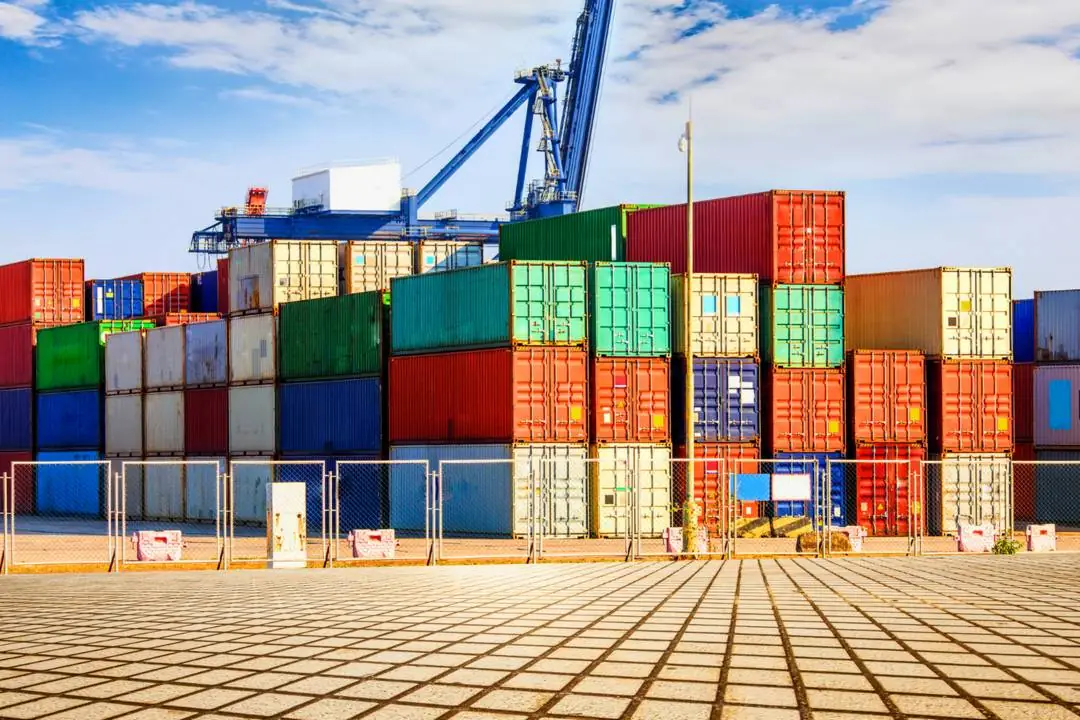The Incoterms (International Commercial Terms) are a set of agreements widely used in international trade to define responsibilities, costs and risks between buyers and sellers during international transactions.
Created by International Chamber of Commerce (ICC), they make it easier to understand contractual obligations and help avoid misunderstandings that could result in losses.
In this article, we'll explain what an Incoterm is, how many there are, which are the most widely used and their importance for global trade. It's worth a look!
What is Incoterm?
Incoterm, short for International Commercial Terms, refers to a set of commercial rules created to standardize the terminology of international transactions, eliminating ambiguities in purchase and sale contracts.
The main purpose of Incoterms is to clearly define the responsibilities of both parties involved in the transaction, making it easier to understand who is responsible for each stage of the transportation and delivery process.
The latest version, Incoterms 2020, has brought some updates to better reflect current trade practices.
With the increasing globalization and expansion of trade, an understanding of Incoterms has become essential for companies operating in the international market.
Main functions of Incoterms
Incoterms have some important functions aimed at making transactions more efficient and transparent. These include:
Define responsibilitiesThey clarify which party is responsible for each stage of logistics, from transportation to payment of costs.
Establish the risk transfer pointThey indicate the moment when responsibility for the goods is transferred from the seller to the buyer.
Distributing costsThey determine who bears which costs in the process, such as transportation, insurance and customs duties, which is fundamental in international accounting.
Avoiding misunderstandings: As Incoterms are international standards, they help to reduce conflicts and facilitate the resolution of disputes in different countries.
How many Incoterms are there?
In the latest version, Incoterms 2020, there are 11 Incoterms different, each with a specific function and applicable to different modes of transport.
These are divided into categories that identify which mode of transport is allowed in each of the terms.
In turn, the 11 Incoterms can be classified into four categories:
- E - Ex Works (EXW)Where the seller makes the goods available to the buyer at his premises, without involving transportation.
- F - FreeWhere the seller is responsible up to a certain point, and the buyer assumes the costs from that point onwards.
- C - CostWhere the seller assumes the transportation costs up to a certain point, but the risk is transferred first.
- D - DeliveredWhere the seller is responsible for delivery to the final destination.
What are the Incoterms?
Incoterms can be applied in various contexts, depending on the needs of the parties and the type of transport involved.
Below is a detailed list of the 2020 Incoterms and their descriptions:
- EXW (Ex Works): The seller makes the goods available for collection at his premises, and the buyer assumes all costs and risks from then on.
- FCA (Free Carrier)The seller is responsible for delivering the goods to a carrier designated by the buyer.
- CPT (Carriage Paid To)The seller pays for transportation to the destination, but the risk is transferred to the buyer when he hands over the goods to the carrier.
- CIP (Carriage and Insurance Paid To)The seller covers transportation and insurance to the destination, with the risk transferring when the goods are handed over to the carrier.
- DAP (Delivered at Place)The seller delivers the goods to a place designated by the buyer, not including unloading.
- DPU (Delivered at Place Unloaded): The seller assumes responsibility for transportation to the destination, including unloading.
- DDP (Delivered Duty Paid): The seller bears all costs and risks up to the place of destination, including import taxes.
- FAS (Free Alongside Ship)The seller places the goods next to the ship at the port of embarkation.
- FOB (Free on Board): The seller assumes the costs and risks until the goods are on board the ship.
- CFR (Cost and Freight)The seller pays for sea transport, but the risk is transferred to the buyer once the goods are on the ship.
- CIF (Cost, Insurance and Freight)Similar to CFR, but the seller also insures the goods.
Incoterms categories
In practice, these categories help to simplify the choice of the right term:
- Incoterms for all modes of transportThey include EXW, FCA, CPT, CIP, DAP, DPU and DDP.
- Incoterms exclusive to maritime transport and inland waterwaysThey include FAS, FOB, CFR and CIF, which are applicable to sea and river cargo transportation.
Incoterms most used in foreign trade
Some Incoterms are more popular because of their adaptability and convenience. The Most used Incoterms are as follows:
- FOB (Free on Board)Widely used in maritime transport, where the seller delivers the goods on board the ship and the buyer assumes the risk from that point onwards.
- CIF (Cost, Insurance and Freight)Used in maritime operations, where the seller covers transportation and insurance costs to the destination.
- DAP (Delivered at Place)Commonly used for deliveries to specific locations designated by the buyer.
- EXW (Ex Works)One of the simplest Incoterms, where the seller makes the goods available at their place of origin and the buyer assumes all the costs and risks.
The importance of Incoterms for international trade
Incoterms are of fundamental importance in international trade, as they allow sellers and buyers from different countries to establish common terms for the operation.
They provide security and avoid possible conflicts that can occur due to differences in the interpretation of responsibilities in the international trade relations. Advantages include:
- Standardization: By being recognized worldwide, Incoterms make transactions simpler.
- Risk reductionBy clearly defining responsibilities, they avoid legal disputes.
- Ease of negotiation: Both parties are clear about the costs and risks involved.
Incoterms rules
The Incoterms rules are established to ensure that both parties agree on the responsibilities and risks involved, as well as adhering to the rules and regulations. avoid fines in foreign trade operations.
Companies should be familiar with these rules when using Incoterms to avoid conflicts. Some important points to consider are the following:
- Clarity on the terms of the contractIt is essential to specify which Incoterm will be used and the detailed responsibilities.
- Appropriate choice of IncotermEach Incoterm is used for specific situations, such as sea or air transport.
- Adapting to updatesIncoterms are periodically updated by the ICC, so it's important to use the latest version.
Bonus: Incoterms table 2020
To make it easier for you to understand the subject, we have prepared a complete table with the Incoterms 2020 to help understand the main responsibilities between buyers and sellers in international transactions.
Incoterms were created by the International Chamber of Commerce (ICC) to standardize the responsibilities and risks of transporting and delivering goods.
| Incoterm | Seller's responsibility | Buyer's responsibility | Mode of Transport |
|---|---|---|---|
| EXW (Ex Works) | Make the goods available at your premises, not including transport or insurance | All shipping and insurance from the seller's location | Any modality |
| FCA (Free Carrier) | Deliver the goods to the carrier indicated by the buyer | Main transportation, insurance and disembarkation | Any modality |
| FAS (Free Alongside Ship) | Deliver the goods alongside the ship at the port of embarkation | Main transportation, insurance and all costs after the port of embarkation | Maritime |
| FOB (Free On Board) | Putting the goods on board the ship at the port of embarkation | Main transportation, insurance and costs after shipment | Maritime |
| CFR (Cost and Freight) | Main transportation to the port of destination (insurance not included) | Insurance and costs after the port of destination | Maritime |
| CIF (Cost, Insurance and Freight) | Main transportation to the port of destination, including insurance | Costs after the port of destination | Maritime |
| CPT (Carriage Paid To) | Main transportation to the agreed destination (insurance not included) | Insurance and costs after the point of destination | Any modality |
| CIP (Carriage and Insurance Paid To) | Main transportation to the agreed destination, including insurance | Costs after the destination point | Any modality |
| DAP (Delivered at Place) | Transportation and delivery to the buyer's final destination, without unloading | Disembarkation and additional costs at final destination | Any modality |
| DPU (Delivered at Place Unloaded) | Transportation to the final destination, including disembarkation | Additional costs at the final destination | Any modality |
| DDP (Delivered Duty Paid) | Transportation to the final destination, including payment of taxes and disembarkation | No additional costs at the destination | Any modality |
In practice, these Incoterms help to define responsibilities in transactions and avoid misunderstandings between buyer and seller.
Conclusion
Knowing and using Incoterms correctly is essential for companies wishing to operate in foreign trade effectively and safely.
With a clear understanding of Incoterms, it is possible to minimize risks and improve the commercial relationship between buyers and sellers.
If you've come this far and think this content has been useful for your business, we'd like to invite you to get to know the CLM Controller and our services in accounting for foreign trade.



